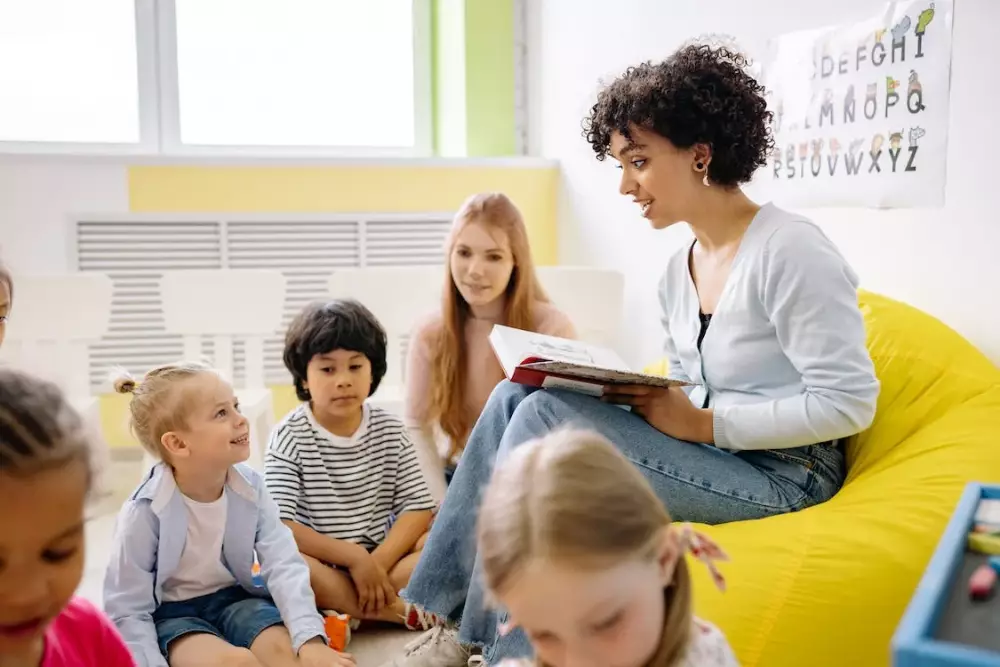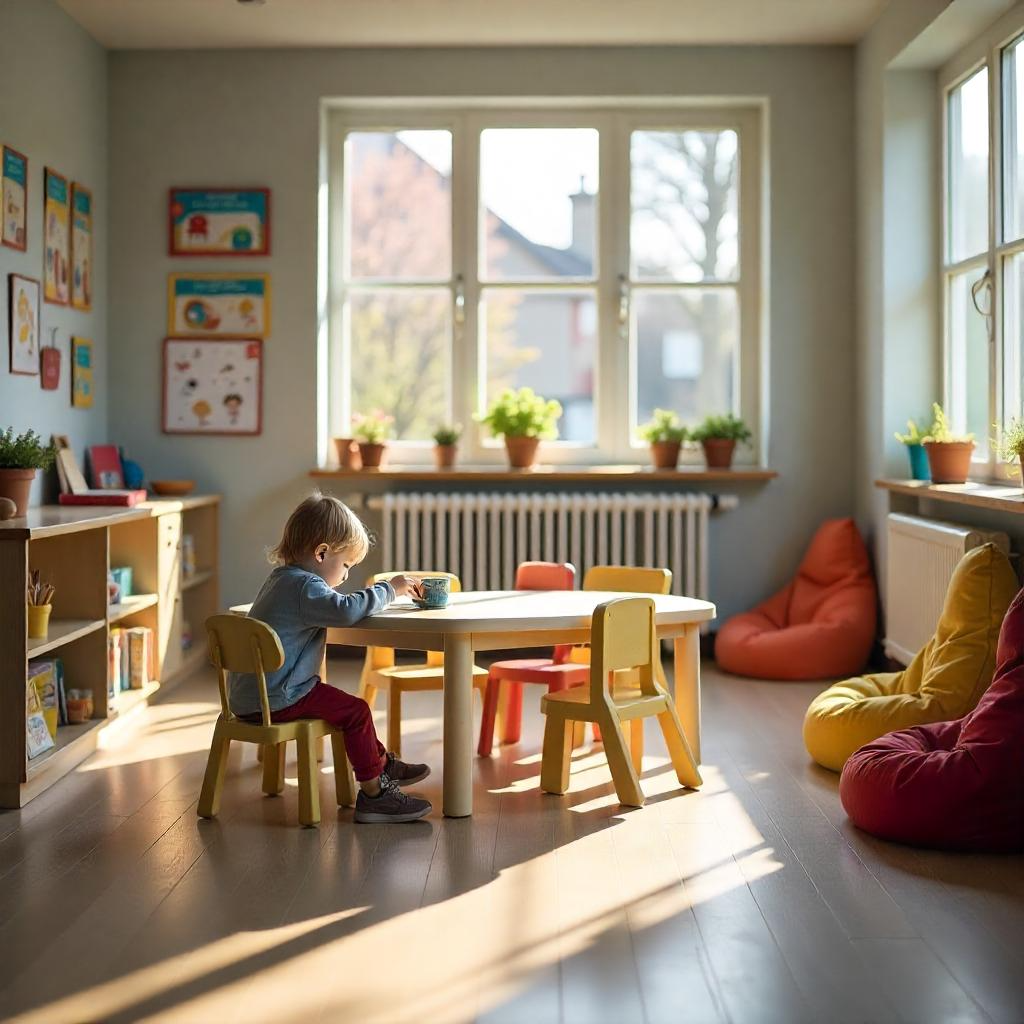
Starting daycare is a big step for young children and their families. It marks the beginning of a new chapter—one filled with discovery, friendships, and early learning experiences. But as exciting as this journey can be, it also comes with its fair share of challenges. For many children, this is their first time being away from home for extended periods, and the unfamiliarity of a new environment, new faces, and new routines can be overwhelming.
Helping children transition smoothly into daycare isn’t just about managing behavior or organizing routines—it’s about creating a space where they feel safe, understood, and supported. Below, we explore how educators and caregivers can foster that sense of security and trust from the very beginning.
Children are deeply influenced by their surroundings. A thoughtfully prepared classroom can ease anxiety and make the child’s first experience away from home feel less daunting. This starts with design: use soft colors, gentle lighting, and cozy corners where children can relax if they feel overwhelmed. Decorate the room with age-appropriate visuals, family photos (with parental permission), and children’s names displayed around the space. These small personal touches tell children, “You belong here.”

Child-sized furniture allows children to navigate the space independently, which not only builds confidence but also helps them feel in control in a setting that is new to them. Consider creating cozy reading nooks or sensory areas with textures and calm activities to help soothe those who need a little extra comfort in the early days.
One of the biggest emotional hurdles in the transition to daycare is separation anxiety—both for the child and the parent. In the first few days, allowing parents to spend a brief amount of time in the classroom can offer children a secure bridge between home and daycare. Whether it's reading a short story together or helping the child hang up their coat, this shared moment creates a sense of routine and comfort.
After drop-off, it’s helpful for caregivers to check in with families, offering brief updates about how their child is settling in. A reassuring message like, “He cried for a few minutes after you left but soon joined us in playing with blocks,” can put a parent’s heart at ease and builds trust between families and staff.
Establishing this partnership early on helps parents feel confident that their child’s emotional well-being is a shared priority—and when parents feel calm and assured, children often follow suit.
Transitions take time, and no two children respond to change in exactly the same way. Some may walk into a new room and engage instantly, while others might cling tightly to a parent or cry during the first few days—or even weeks.
It’s crucial that educators respond with patience, empathy, and consistency. A calm, predictable presence offers comfort during uncertain moments. Sit beside a child who’s withdrawn, offer your hand, or simply acknowledge their feelings with a gentle, “I know you miss home right now. It’s okay. I’m here with you.”
These moments of connection might seem small, but they are powerful in helping children build trust and begin to feel safe. Over time, with repeated gentle responses, most children begin to relax and engage with their new environment.
As children begin to settle into daycare, even the smallest achievements deserve to be celebrated. Putting on their own shoes, joining a group activity, or staying calm during drop-off are all milestones worth recognizing.
Positive reinforcement boosts self-esteem and motivation. Specific praise is more effective than general praise. For example, instead of saying “Good job,” say, “You did a great job putting away the puzzles all by yourself!” This not only validates their actions but also helps them understand what behaviors are appreciated.
Visual cues like sticker charts or a “star of the day” badge can be encouraging, but don’t underestimate the power of a simple smile, a high-five, or a warm “Thank you for helping.”
Young children, especially those who are new to group settings, thrive on clarity. Use short, simple sentences and gentle tones. Avoid giving too many instructions at once. Instead of saying, “Put away your toy, line up, and wash your hands,” try breaking it into steps: “Let’s put away the toy first… Now we line up… Good! Time to wash our hands.”
Visual routines can also support understanding. Having a picture-based schedule on the wall helps children predict what’s coming next and gives them a sense of structure. This predictability can reduce anxiety and make transitions throughout the day feel smoother.
Every child expresses their needs differently. Some may cry or cling; others might become quiet or overactive. Careful observation helps educators understand what lies beneath these behaviors. Does a child become anxious during clean-up time? Maybe they need more warning before a transition. Is one child constantly seeking physical closeness? They may be craving extra reassurance in the absence of their caregiver.
By watching closely and documenting behaviors, educators can make thoughtful adjustments—whether that means offering more one-on-one time, changing the pace of activities, or adjusting the environment to suit individual needs.
Observation isn’t only about challenges, though. It’s also a way to celebrate growth. Noticing when a shy child begins to speak more, or when a previously hesitant child participates in play, helps educators reflect on what’s working and share those victories with families.
The early days in daycare are about more than simply adjusting to routines—they’re about building a foundation of trust, security, and belonging. By creating a nurturing space, collaborating with families, and responding to each child with sensitivity and care, educators can transform this transition into a beautiful beginning.
When children feel safe and supported, their curiosity blossoms. They begin to explore, make friends, and discover the joy of learning. And that, truly, is the magic of early childhood education.

ChildcareInsights only allows advertisers that are either state licensed, or have an exemption, on our website.